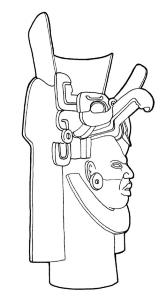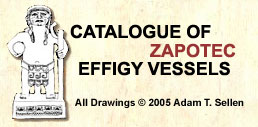| Key: MNA 6-5801 | | Actual Location: National Anthropology Museum, Mexico City, Mexico. | | Registration: MNA cat. 6-5801/ Inv. 10-61343. | | Provenance: Tomb 77, no. 26, Monte Albán, Oaxaca. | | Measurements: 81.5 x 66 cm. | | Color: Painted in blue, yellow, white and red. | | Chronology: MA II (Caso and Bernal 1952: 202); Niza 100 BC - 200 AD | | Click to view Chronology | | Reference: Caso 1935: 26-27; Keleman 1943: vol. II, plate 121c; Toscano 1944: 429; Caso & Bernal 1952: 202-203, figs. 341, 341 bis; Covarrubias 1957: plate XXXIV; Paddock 1966: 124, fig. 80; Gendrop 1970: 137, fig. 158b; Pre-Columbian Art 1990: 151, fig. 52. | | Comments: This piece was found by Alfonso Caso in the period PMA IV (1934-1935). According to Caso and Bernal, the piece is an early expression of the "God with Head Piece of a Wide-Beaked Bird" (1952: 204). Flannery and Marcus believe that the urn represents a warrior because, according to them, the head piece worn by the figure is a bird of prey (1996: 199). See also MNA t/77, no. 3. | |
| | 
Click to view high resolution in a new window
select this image for review |
